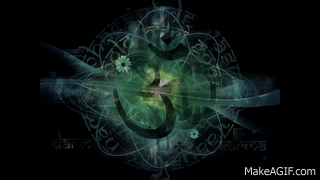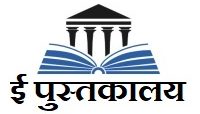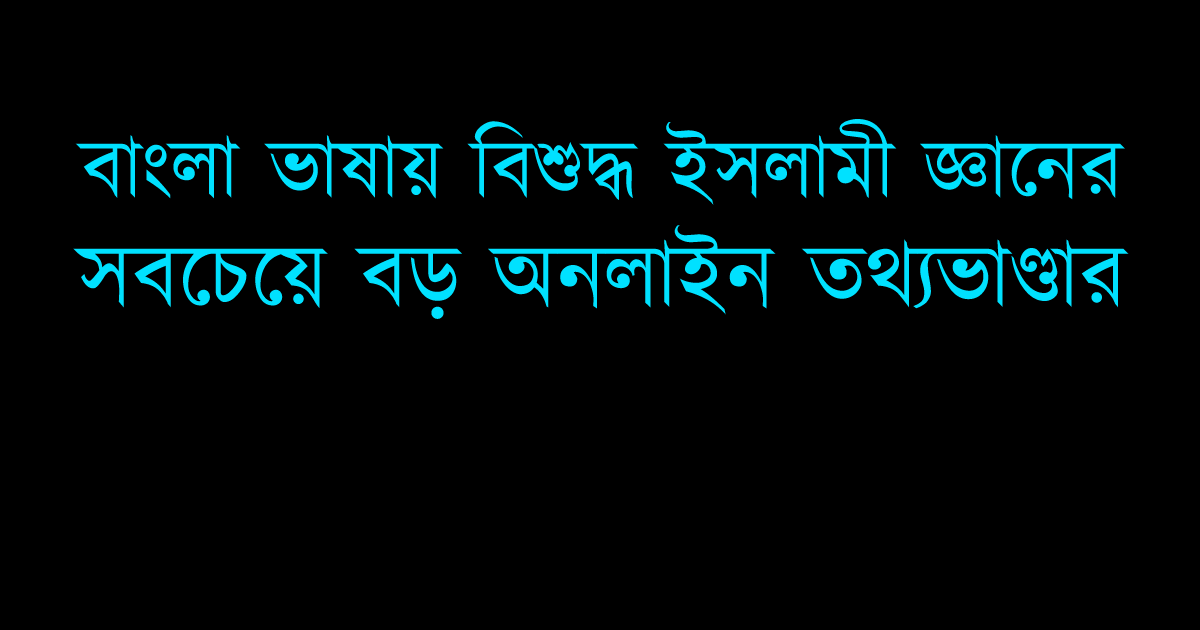List Of 308 Castes In Islam Indian Muslims
Islamic caste, any of the units of social stratification that developed among Muslims in India and Pakistan as a result of the proximity of Hindu culture. Most of the South Asian Muslims were recruited from the Hindu population; despite the egalitarian tenets of Islam, the Muslim converts persisted in their Hindu social habits. Hindus, in turn, accommodated the Muslim ruling class by giving it a status of its own.In South Asian Muslim society a distinction is made between the ashrāf (Arabic, plural of shārīf, “nobleman”), who are supposedly descendants of Muslim Arab immigrants, and the non-ashrāf, who are Hindu converts. The ashrāf group is further divided into four subgroups: (1) Sayyids, originally a designation of descendants of Muhammad through his daughter Fāṭimah and son-in-law ʿAlī, (2) Shaykhs (Arabic: “Chiefs”), mainly descendants of Arab or Persian immigrants but also including some converted Rājputs, (3) Pashtuns, members of Pashto-speaking tribes in Afghanistan and northwestern Pakistan, and (4) Mughals, persons of Turkish origin, who came into India with the Mughal armies.
The non-ashrāf Muslim castes are of three levels of status: at the top, converts from high Hindu castes, mainly Rājputs, insofar as they have not been absorbed into the Shaykh castes; next, the artisan caste groups, such as the Julāhās, originally weavers; and lowest, the converted untouchables, who have continued their old occupations. These converts of Hinduism observe endogamy in a manner close to that of their Hindu counterparts.Two of the principal indexes of Hindu caste, commensality and endogamy (principles governing eating and marital arrangements), do not appear as strongly in Islamic castes. Commensality is prohibited between ashrāf and non-ashrāf, between Muslim and Hindu, and between the various castes of the non-ashrāf. The principle of endogamy is altered by the Muslim preference of marriage within very narrow limits (e.g., to the daughter of the father’s brother), which in South Asia is known as biyāhdārī.
Khoja, Persian Khvājeh, caste of Indian Muslims converted from Hinduism to Islam in the 14th century by the Persian pīr (religious leader or teacher) Saḍr-al-Dīn and adopted as members of the Nizārī Ismāʿīliyyah sect of the Shīʿites. Forced to feign either Hinduism, Sunni Islam, or Ithnā ʿAshariyyah in order to preserve themselves from persecution, some Khojas, in time, became followers of those faiths
The term Khoja is not a religious designation but a purely caste distinction that was carried over from the Hindu background of the group. Thus, there are Sunni Khojas and Shīʿite Khojas. Other Nizārī Ismāʿīlīs share the same beliefs, practices, and even language with the Khojas. However, one cannot enter the caste except by birth.
Khojas live primarily in India and eastern Africa. Every province with large numbers of them has an Ismāʿīlī council, the decisions of which are recognized as legal by the state. As Nizārī Ismāʿīlīs, Khojas are followers of the Aga Khan.
Islam does not recognize any castes, but, when it came to Persia and India, the existing divisions in these regions were adopted among the local Muslim societies. Evidence of social stratification can be found in several later Persian works, such as Siyasatnama of Nizam al-Mulk (11th century), Akhlaq-i Nasiri of Nasir al-Din al-Tusi (13th century), and Jam-i-Mufidi (17th century).
The Muslims who came to the subcontinent during the 12th century Muslim conquests on the Indian subcontinent were already divided into social classes such as priests, nobles and others. Further, a racial segregation demarcated the local Muslim converts from those of foreign origin. The foreigners claimed a superior status as they were associated with the conquerors, and categorized themselves as Ashraf ("noble"). Over time, the Indian Muslim society also split on the basis of the existing Hindu caste system. According to M. N. Srinivas (1986) and R.K. Bhattacharya, Indian Hindu converts to Islam brought their original caste system to the Muslim society in the region. On the other hand, Louis Dumont (1957) believes that the Islamic conquerors consciously adopted the Hindu caste system "as a compromise which they had to make in a predominantly Hindu environment."
Ziauddin Barani, a 14th century political thinker of the Delhi Sultanate, recommended that the "sons of Mohamed" (i.e. Ashrafs) be given a higher social status than the low-born (i.e. Ajlaf). His most significant contribution in the fatwa was his analysis of the castes with respect to Islam. His assertion was that castes would be mandated through state laws or "Zawabi" and would carry precedence over Sharia law whenever they were in conflict. According to Barani, every act which is "contaminated with meanness and based on ignominity, comes elegantly [from the Ajlaf]". Barani also developed an elaborate system of promotion and demotion of Imperial officers ("Wazirs") that was primarily based on their caste.
History of research
There are various definitions of the term "caste", and therefore, various opinions on whether this term can be used to denote social stratification among non-Hindu communities. Ghaus Ansari (1960) uses the term "caste" to describe the Muslim social groups with following characteristics:
- endogamy within a given social group
- hierarchical gradation of social groups
- determination of the group membership by birth
- in some cases, association of an occupation with the social group
Beginning in the 19th century, the British scholars of India first catalogued the various Muslim castes:
- Henry Miers Elliot's Supplement to the glossary of Indian terms (1844), later amplied into Memoirs on the history, folk-lore, and distribution of the Races of the North Western Provinces of India
- John Charles Williams's The Report on the Census of Oudh (1869)
- Denzil Ibbetson's Census Report of Punjab (1883), later adapted into Panjab Castes
- John Nesfield's Brief View of the Caste System of the North-Western Provinces and Oudh (1885)
- Herbert Hope Risley's Tribes and castes of Bengal (1893)
- William Crooke's The tribes and castes of the North-western Provinces and Oudh (1896)
Nelson's book, in particular, included a whole chapter dedicated to the Muslim castes. In the 20th century British India, a number of works included the Muslim social groups in their descriptions of the Indian castes. These included H. A. Rose's A Glossary of the Tribes and Castes of the Punjab and North-West Frontier Province (1911).
In independent India, Ghaus Ansari (1960) initiated academic discussion over the Muslim caste system. Subsequently, Imtiaz Ahmed elaborated the topic in his Caste and Social Stratification among the Muslims (1973).
Ghaus Ansari (1960) named the following four broad categories of Muslim social divisions in India:[11]
- Ashraf, who claim foreign-origin descent from Afghans, Arabs, Persians and Turks etc.
- Converts from upper castes
- e.g. Muslim Rajputs
- Converts from other "clean" castes
- Converts from untouchable castes
- e.g. Bhangi
The non-Ashrafs are categorized as Ajlaf. The untouchable Hindu converts are also categorized as Arzal ("degraded"). They are relegated to menial professions such as scavenging and carrying night soil.
B.R. Ambedkar, citing the Superintendent of the Census for 1901 for the Province of Bengal, mentions that the Ajlaf primarily include:
- Cultivating Sheikhs, and others who were originally Hindus but who do not belong to any functional group, and have not gained admittance to the Ashraf Community, e.g. Pirali and Thakrai.
- Darzi, Brahmin, Jolaha, Fakir, and Rangrez.
- Barhi, Bhalhiara, Chik, Churihar, Dai, Dhawa, Dhunia, Gaddi, Kalal, Kasai, Kula Kunjara, Laheri, Mahifarosh, Mallah, Naliya, Nikari.
- Abdal, Bako, Bediya, Bhal, Chamba, Dafali, Dhobi, Hajjam, Mucho, Nagarchi, Nal,Panwaria, Madaria, Tunlia.
For the Arzal, the following castes are mentioned by the Superintendent of the Census: Bhanar, Halalkhor, Hijra, Kasbi, Lalbegi, Maugta, Mehtar.
In Pakistan, various social groups (called quoms) display a social stratification comparable to the Indian caste system. The various quoms differ widely in power, privilege and wealth. Both ethnic affiliation (e.g. Pathan, Sindhi, Baloch, Punjabi, etc.) and membership of specific biraderis or zaat/quoms are additional integral components of social identity.Within the bounds of endogamy defined by the above parameters, close consanguineous unions are preferred due to a congruence of key features of group- and individual-level background factors as well as affinities. McKim Marriott adds that a social stratification that is hierarchical, closed, endogamous and hereditary is widely prevalent, particularly in western parts of Pakistan.
In Nepal, the castes of Muslims rank differs according to the criteria applied.
List of Muslim Other Backward Classes communities in India
List Of 308 Castes In Islam Indian Muslims
Hinduism is vilified for its Caste
Divisions.
Caste is some thing that can not be
wished away in a Human being however enlightened one pretends to be.
For my views on Caste please refer my
post caste, under Hinduism.
Religions that make fun of idol
worship have landed in worshiping idols.
Islam, The Kaaba,Prophet’s
hair,Hazratbal
Christianity, Jesus, The Cross.
Buddhism, The Buddha, His teeth.
Jainism, Bhaubali, Mahaveera.
Hinduism understands that human mind
can not function and focus in a vacuum and hence recommended Idol worship,
though in higher philosophy of Hinduism, Idol worship is discouraged.
Please read my articles on this.
This is the list of castes among
Muslims in India, some 308 of them!
1. Arain 62. Lal Begi 179. Pathans of
Madhya Prades2. Arghon 63.
Kulhaiya 78. Shaikh
of Bihar3. Ansari 64.
Malik of Bihar 13. Dhobi 104.
Ghanchi-Pinjara4. Baghban 5.
Balti 6.
Behna 7.
Bhatiara8. Bhishti 9.
Bisati 10.
Burig 11.
Chaush 12. Dard 12.Hyderabadi 14.
Ghosi 15.
Gujjar 83.
Alavi Bohra 84. Ansari18. Khanzada 19.
Kashmiri 20.
Kunjra
21. Malkana 22.
Manihar 23.
Mappila 24. Meo 25. Mughal 26. Pathans 27.
Qassab 28.
Muslim Rajput 29. Ranghar 30. Rangrez 31. Saifi 32.
Shaikh 33.
Sayyid 34.
Salmani 35. Siddi 36. Teli 37.
Assamese38.
Bengali 39.
Bhili 40. Dogra 41. Gondi 42.
Gujarati 43.
Konkani 44.
Nawayath 45. Marathi 46. Meitei 47.
Oriya 48.
Tamil 49.
Telugu 50. Labbay 51. Goan Muslims 52. Abdal 53.
Ansari 54.
Bakho 55. Bisati 56. Chamail 57.
Churihar 58. Chik (Muslim) 59. Gaddi 60.
Idrisi 61. Khanzada 65.
Mirasi 66.
Mirshikar 67.
Mughal 68. Muker 69. Pasi 70.
Nat 71.
Pamaria 72.
Pathan of Bihar 73. Rayeen or Kunjra (Muslim) 74. Sai 75.
Sapera 76.
Sayyid 77.
Syed (Mallick) . 79.Shershahabadia 80. Thakurai 81. Teli 82. Abdal 85. Arabs 86.Attarwala 87.
Bafan 88. Baloch89. Banjara 90. Behlim 91.
Bhadala 92.
Bharbhunja 93.
Bhishti 94. Chhipa 95. Chunara 96.
Chundrigar 97.
Dawoodi Bohra 98.
Dhobi 99.
Dhuldhoya 100. Doodwala 101.
Faqir 102.
Galiara 103.
Ghanchi 105.Halaypotra 106.Hingorja 107. Hingora 108. Jats of Kutch 109. Juneja 110. Kadia 111.
Kagzi 112.
Ker 113.
Khalifa 114. Khaskheli 115. Khoja 116.
Machiyar 117.
Makrani 118.
Malik of Gujarat 119.
Mandali120. Makwana 121.
Manka122.
Mansoori 123. Memon 124.
Meta Qureshi 125. Miyana 126.
Molesalam 127. Momna 128. Mughal 129. Multani 130. Multani Lohar 131.
Mutwa 132.
Nagori 133.
Nayak 134. Node 135. Panar 136.
Parmar 137.
Patani Bohra 138. Patni Jamat 139.
Pathans of Gujarat 140. Salaat 141.
Samma 142.
Sandhai Muslims1 43. Sanghar 144.
Shaikhs of Gujarat 145. Shaikhda 146.
Sayyid of Gujarat 147. Siddi 148. Sipahi 149. Soomra 150. Sulaymani Bohra 151. Sunni Bohra 152.
Tai 153.
Turk Jamat 154. Vora Patel 155. Vyapari 156. Wagher 157.
Baghban158. Beary 159. Chaush 160. Chhaparband 161. Kodava maple 162.
Maaple 163.
Konkani Muslims 164. Nawayath 165. Pinjara 166. Siddi 167.
Mappila 168. Keyi 169. Thangal 170. Marakkar171. Ossan 172.
Pusalan 173.
Thulukkar 174. Ansari 175. Banjara176. Dawoodi Bohra 177. Mughal178. Dhobi. Shaikh 181. Sayyid182. Attar183.
Baghban 184.
Bhishti 185. Chaush 186. Chhaparband187. Dawoodi Bohra 188. Dhawad 189. Faqir 190. Garodi 191. Gavandi 192. Kachar 193.
Kagzi194. Konkani Muslims 195. Momin 196. Muslim Raj Gond 197. Qassab 198. Qutbi Bohra 199.
Saiqalgar 200. Tadvi Bhil 201.
Ansari 202.
Bhutta 203. Cheetah 204. Chadwa 205. Dawoodi Bohra 206.
Deshwali 207. Gaddi 208. Ghosi 209. Hela Mehtar 210. Hiranbaz 211.
Kandera 212.
Khadem 213. Khanzada 214. Langha215. Manganiar216. Merat 217. Meo 218.
Mughal 219. Pathans of Rajasthan 220. Pinjara 221.
Qaimkhani 222.
Rangrez 223. Rath 224. Shaikhs of Rajasthan 225. Silawat 226. Sindhi-Sipahi 227. Singiwala 228.
Sorgar 229. Kayalar 230. Labbay 231. Marakkar 232. Rowther 233.
Mappila 234. Ahbans Khanzada 235. Ansari2 36. Atishbaz 237. Bachgoti Khanzada 238. Baghban 239. Baluch240. Bandhmati 241. Banjara242. Barhai 243.
Behlim 244. Bannu Israil245.
Behna 246. Bhand 247. Bharbhunja 248.
Bhale Sultan Khanzada 249. Bhatti Khanzada 250. Bhatiara 251. Bhishti252. Bhumihar Musalman 253. Bisen
Khanzada 254. Bisati 255. Chandel Khanzada 256. Chik 257. Dakhini 258.
Dafali 259. Dhagi260. Dharhi 261. Dhobi Musalmaan262. Dogar263.
Fareedi 64. Faqir 265.Gaddi 266.
Garha (Gaur Brahmin-Mughal Community)267. Gautam Khanzada268. Ghosi 269. Goriya 270. Gujjar Musalmaan 271.
Halalkhor272. Halwai 273.
Idrisi 274.
Tamimi Iraqi 275. Jat Musalmaan276. Jhojha 277.
Kabaria 278. Kakorvi Shaikh279. Kamangar 280.
Kamboh 281. Kasgar282. Kayastha Musalman 283. Khanzada 284. Khokhar Khanzada 285. Khumra286. Kingharia 287.
Kunjra 288. Lal Begi 289. Lalkhani Rajput 290. Madari291. Mandarkia 292.
Malkana 293. Manihar
294. Meo
295. Milki
296. Mirasi
297. Mughal
298. Mujavir
299. Muker
300. Nagar Muslims
301. Nalband
302. Nanbai
303. Naqqal
304. Panchpiria
305. Pankhiya
306. Pathans of Uttar Pradesh
307. Putliwale
308. Qalandar.

























No comments:
Post a Comment
ধন্যবাদ